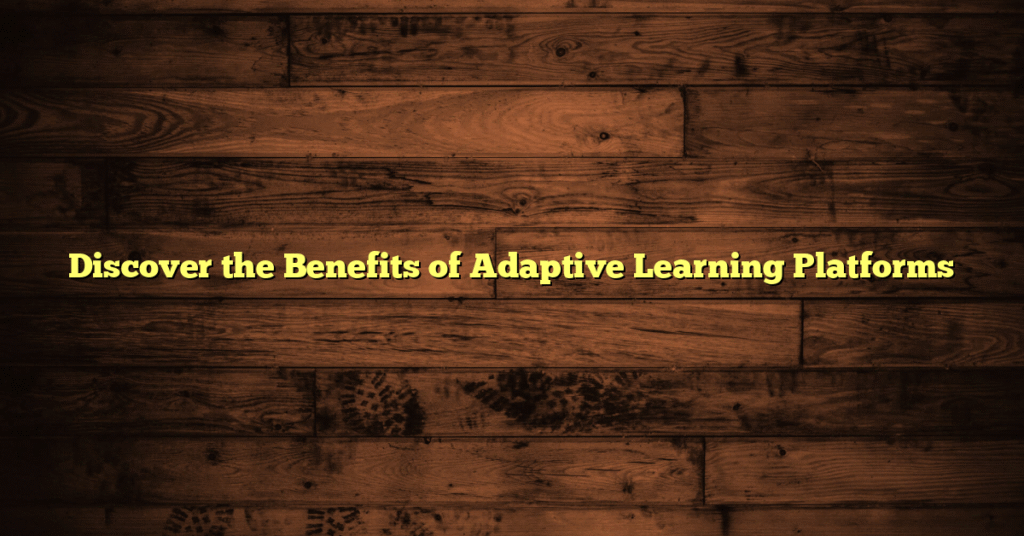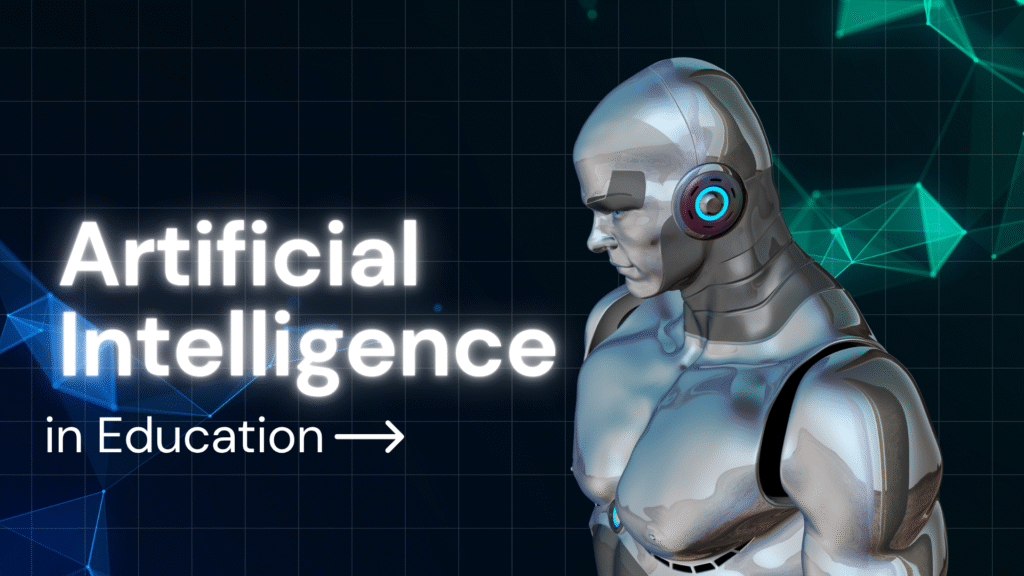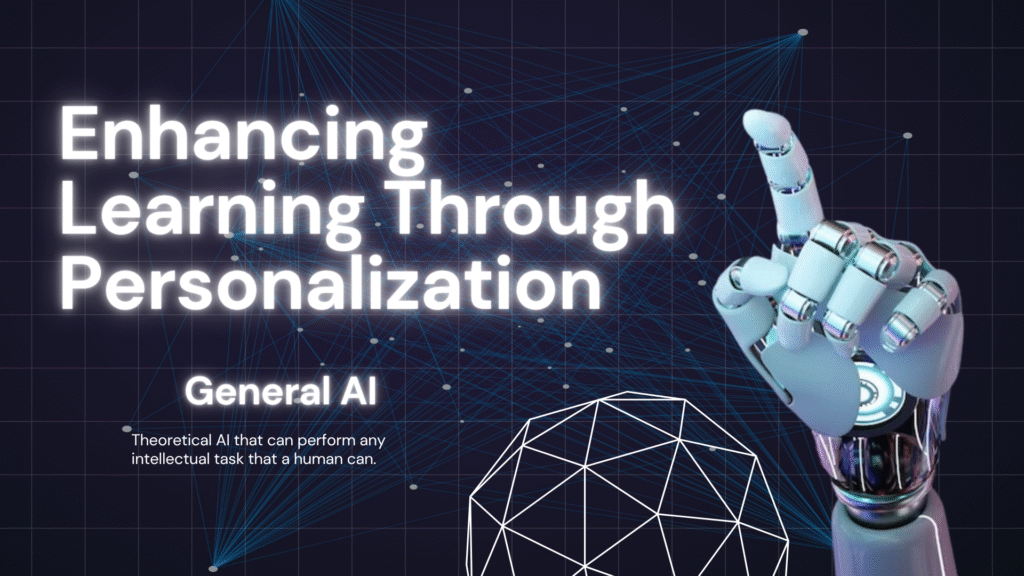With education changing faster than ever, it’s clear that a single approach doesn’t work for every student anymore. That’s where smart tools like AI-powered learning systems and customized digital platforms come in — helping learners follow paths that match how they learn best.
As a result, educators are turning to adaptive learning tools that adjust lessons to fit each student, rather than forcing all students to fit the lesson. These revolutionary models currently personalize learning experiences, adapting the curriculum primarily based on a learner’s explicit individual progress and understanding. In this guide, we’ll explore what adaptive learning is, how these platforms work, the value they add to classrooms, and how to use them effectively — whether you’re a student, teacher, or self-learner.
What Is Adaptive Learning and How Does It Work?
Adaptive learning platforms are technology-driven educational strategies designed to tailor the academic experience to the individual desires, strengths, and weaknesses of each scholar. By way of utilizing algorithms, data analytics, and artificial intelligence (AI), these platforms assess students’ effectiveness in real-time and alter the content accordingly. This personalised strategy not only enhances engagement nonetheless also fosters a deeper understanding of the material.
Often called adaptive e-learning tools, these platforms combine smart technology with learning science to fine-tune what a student sees next — right when they need it.
Key Features of Adaptive Learning Technology
The following features are common in modern personalized learning technology tools
-
- Personalised Learning Paths: These platforms create personalised learning journeys that adapt in real time, contemplating a scholar’s tempo and comprehension.
-
- Actual-time Choices: Quick insights into effectiveness allow learners to know their errors and grasp concepts more successfully.
-
- Data-Pushed Insights: Educators can entry analytics that highlight areas the place students are excelling or struggling, enabling targeted interventions.
Why Adaptive Learning Works: Benefits for Students and Teachers
1. Boosting Student Engagement with Personalized Learning
One of the biggest advantages of using adaptive e-learning tools is their ability to boost engagement by adjusting content to match how each student learns best. In distinction to standard methods, the place a one-size-fits-all strategy would possibly leave some students behind, adaptive learning permits learners to progress at their very non-public tempo. This personal strategy retains students motivated, as they can see their improvement over time.
Evaluation from the Bill & Melinda Gates Foundation found that adaptive finding out utilized sciences might assist enhance student engagement by 25%, providing a compelling reason for institutions to place cash into these platforms.
2. Improve Learning Outcomes with Instant Feedback
Adaptive learning platforms have been confirmed to yield enhanced learning outcomes. By offering tailored content, Students are far less likely to feel overwhelmed or disengaged. For instance, if a scholar struggles with a thought in mathematical drawing once more, the platform can be altered by providing extra sources or exercises that focus notably on that area.
Primarily based on an analysis revealed all by means of the Journal of Educational Psychology, students who engaged with adaptive learning models carried out higher on standardized assessments than their peers who did not, highlighting the effectiveness of this tailored strategy.
3. Flexible and Accessible Learning for All
In an increasingly digital world, the flexibility of adaptive learning platforms permits learners from pretty just some background to entry high-quality education from anywhere. That’s considerably helpful for non-traditional students, akin to working professionals and other people in distant areas, who would possibly struggle to attend traditional programs.
For instance, platforms like Khan Academy currently offer an array of free sources that adapt to learners’ distinctive desires, thus breaking down boundaries to education.
4. Using Data to Guide Instruction
Adaptive finding out platforms for current educators with rich data analytics that assist in making educated teaching choices. This data illuminates traits in scholar effectiveness and identifies explicit areas the place students would possibly require more help.
A report by the U.S. Division of Coaching outlined how data-driven tutorial methods would possibly result in extra valuable outcomes, emphasizing the importance of analytics in customizing the educational experience.
5. Is Adaptive Learning Cost-Effective?
Whereas preliminary startup costs for implementing adaptive finding out platforms can seem extreme, the long-term financial benefits usually outweigh these expenditures. By enhancing scholar effectiveness and retention costs, adaptive learning reduces the costs associated with remedial packages or dropout costs.
Moreover, many platforms, akin to Edmodo, currently offer tiered pricing that caters to just some educational institutions, making it a financially viable option even for smaller organizations.
Real-World Success Stories Using Adaptive Learning
How ASU Boosted Retention with Smart Sparrow
Arizona State School has been at the forefront of integrating adaptive learning platforms into its curriculum. The faculty has efficiently utilized sciences like Good Sparrow to personalize scholar learning in points ranging from biology to statistics. As a result, ASU has reported elevated retention costs and improved effectiveness outcomes.
These case studies highlight how institutions are leveraging AI in education and adaptive e-learning platforms to overcome traditional barriers and improve student outcomes.
Georgia State’s Success with ALEKS
Georgia State School adopted adaptive learning in gateway packages, which traditionally had extreme failure costs. With platforms akin to ALEKS, they witnessed an enormous low value in dropout costs. The faculty reported that these packages, once considered major hurdles, now have nearly 90% course completion costs.
Stanford’s Adaptive Approach to STEM Education
Stanford’s use of adaptive learning to bolster STEM education has yielded spectacular outcomes. By way of utilizing platforms like Knewton, instructors have tailored their teachings to work efficiently with just some learning styles, resulting in heightened student engagement and better understanding of advanced concepts.
How to Choose the Best Adaptive Learning Platform
Step 1: Understand Your Students’ Learning Needs
Previous to deciding on a platform, take into account the exact educational desires of your learners. Ponder components such as age group, matter provided, and the number of learning varieties within your student body.
Step 2: Look for an Intuitive User Experience
Choose an adaptive learning platform that offers a user-friendly interface. A platform that is simple to navigate will guarantee that every instructor and student can undertake it without out necessary state of affairs.
Step 3: Make Sure the Platform Can Grow With You
Select a platform which may develop alongside alongside alongside along with your educational desires. As your institution expands, you possibly can presumably presumably require additional resources to accommodate extra students or pretty just some packages.
Step 4: Prioritize Support and Training Resources
Search for distributors that currently offer strong purchaser support and provide instructional resources to help educators learn to use the platform effectively. Environment and Good training can significantly reduce the learning curve.
Best Practices for Integrating Adaptive Learning Tools
Combine Adaptive and Group Learning Approaches
Whereas adaptive learning focuses on explicit individual paths, don’t neglect the price of collaborative learning. Introduce group initiatives or discussions to help students have a look at each other, fostering a group learning setting.
Use Analytics to Monitor Student Progress
Income from the information analytics equipped by the platform to take a look at scholar progress. Modify your instructing methods primarily based on this data, and don’t hesitate to provide extra help for students who are also struggling.
Support Teachers with Ongoing Training
Interact in ongoing educational enhancement to stay updated with the latest in adaptive learning applied sciences. This consciousness will help you to to revenue from these models most successfully and deal with enhancing the learner’s experience.
Final Thoughts: Why Adaptive Learning Is the Future of Education
Adaptive learning platforms characterize a transformative shift in how we strategy education. By personalizing the academic experience, these models cater to the distinctive desires of each scholar, enhancing engagement, retention, and learning outcomes. The success tales from institutions like Arizona State University and Georgia State University present that with the exact implementation, adaptive learning platforms can revolutionize educational practices.
As we proceed to embrace know-how in educating, consideration to the selection and integration of adaptive learning platforms will seemingly be important. By evaluating educational desires, choosing user-friendly platforms, and being interested in ongoing instruction, educators can create an enriching learning setting for all students.
Uncover platforms akin to Khan Academy, Smart Sparrow, and Edmodo in your adaptive finding out desires, and take these strategies into account in your educational framework for max success.



